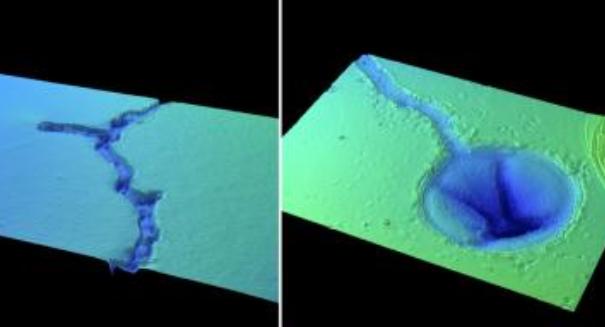
When the concentration of CO2 drops from 1500 ppm to 200 ppm, weathering rates decrease by a third, reducing the ability of forests to eliminate CO2 from the atmosphere.
According to a news release from the European Geosciences Union, ancient forests stabilized Earth’s carbon dioxide and climate.
When CO2 levels became too low for plants to develop correctly, forests stabilized the climate by decelerating the removal of CO2 from the atmosphere.
“As CO2 concentrations in the atmosphere fall, the Earth loses its greenhouse effect, which can lead to glacial conditions,” says lead-author Joe Quirk from the University of Sheffield. “Over the last 24 million years, the geologic conditions were such that atmospheric CO2 could have fallen to very low levels – but it did not drop below a minimum concentration of about 180 to 200 parts per million. Why?”
Prior to fossil fuels, natural processes stabilized Earth’s atmospheric CO2. Volcanic eruptions, for example, release CO2, while weathering on the continents eliminates it from the atmosphere over millions of years. Weathering is the breakdown of minerals within rocks and soils. Silicate minerals weather in contact with carbonic acid in a process that eradicates CO2 from the atmosphere. The products of these reactions are moved to the oceans in rivers where they eventually develop carbonate rocks that isolate carbon on the seafloor for millions of years, stopping it from developing CO2 in the atmosphere.
Forests augment weathering rates because trees break down rocks and minerals in the soil to obtain nutrients for development. The researchers discovered that when the CO2 concentration was low trees and fungi were much less effective at breaking down silicate minerals, which could have decreased the rate of CO2 removal from the atmosphere.
“We recreated past environmental conditions by growing trees at low, present-day and high levels of CO2 in controlled-environment growth chambers,” notes Quirk. “We used high-resolution digital imaging techniques to map the surfaces of mineral grains and assess how they were broken down and weathered by the fungi associated with the roots of the trees.”
The researchers discovered that low atmospheric CO2 behaves as a “carbon starvation” brake. When the concentration of CO2 drops from 1500 ppm to 200 ppm, weathering rates decrease by a third, reducing the ability of forests to eliminate CO2 from the atmosphere.
The weathering rates by trees and fungi fall because low CO2 diminishes plants’ capability to carry out photosynthesis, meaning less carbon-energy is available to the roots and their fungi. As a result, there is less nutrient uptake from the minerals in the soil, which decreases weathering rates over millions of years.
“It is important that we understand the processes that affect and regulate climates of the past and our study makes an important step forward in understanding how Earth’s complex plant life has regulated and modified the climate we know on Earth today,” explains Quirk.
The study’s findings are described in greater detail in the journal Biogeosciences.
Leave a Reply